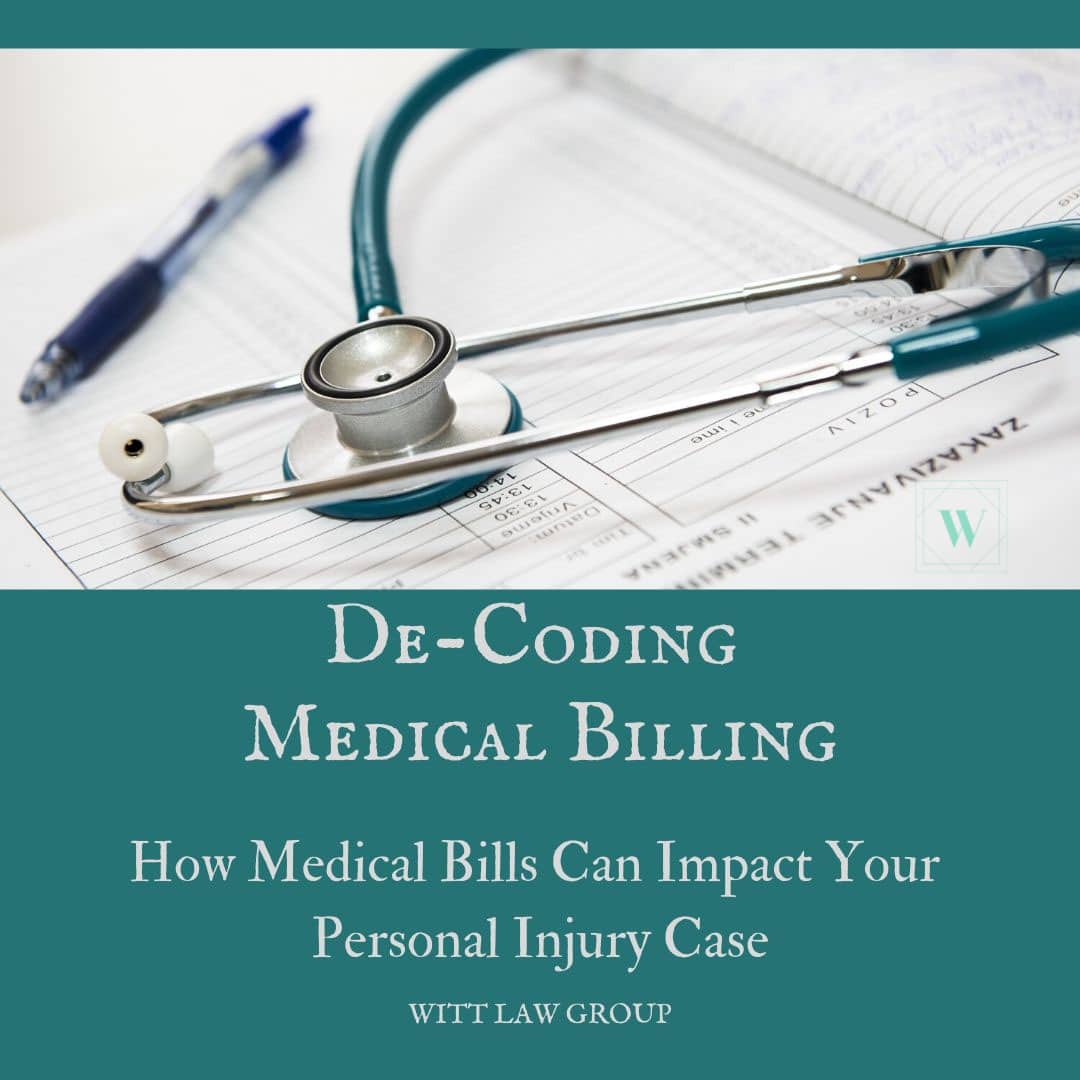
If you are tuned into current events, you recently heard mention of efforts to require more transparency in healthcare costs. One of the challenges that consumers face is not understanding how medical facilities code their services for billing. Additionally, there is very little consistency in the coding—even within the same facility.
Why Are There Multipe ER Bills?
For starters, a visit to your local emergency room will typically produce two or three bills. The first bill will be a facility bill. This bill will list a charge of level I up to level V based on the complexity of your visit. Level V is the most complex and, therefore, the most expensive. Most often, another bill will be sent to you for the emergency room physician’s services. In our experience, these collection services tend to be the most aggressive and the least flexible. Finally, if you had any X-rays or a CT scan done while at the hospital, you will likely receive a separate imaging bill. Any lab work performed can also be billed separately but, depending on the facility, might be included in your facility bill as a separate line item. That’s a lot of billing!
Of the bills generated by an Emergency Department, the one most ripe for review is your facility bill. The reason is that there are no exact standards for assessing the complexity of your visit. Basically, there is a lot of gray area in facility coding. For example, if two individuals seek care for chest pains, one emergency department patient might be billed level III and the other at level IV or V. One of the patients might be older and the symptoms might look like a potential heart attack so many more resources and testing is necessary. A young healthy patient might have a history of heartburn and the doctor provides a prescription level medication for the discomfort without performing an EKG or labs.
How Are My Bills Coded? And What Does That Mean?
While there are no hard and fast rules about coding your visit, there are some general rules that the provider uses to properly bill you for services. First, there is a valuation of resources. This means the provider is looking at how a patient with your symptoms or presentation uses resources such as nursing, staff, ER room, and even the cost to create a medical record and bill you. Second, the number of diagnostic tests used to determine your diagnosis or rule out more serious concerns is a factor in cost. Finally, the level of complexity of your presentation is a big factor in determining the proper level of coding. For example, if you are brought to the ER unconscious with no guidance on how or why you are unconscious, there will be many doctors, nurses, lab technicians and specialists trying to quickly determine whether you are in a life or death situation. Your presentation to the facility has pulled so many resources for only one patient that the bill will reflect that “draw” on resources.
Can You Really Afford To Go To The Emergency Room?
The problem for the average consumer is that, when you have to use the emergency department because the urgent care is closed, how can you decide whether you can afford to treat your strep throat tonight or whether you should manage until tomorrow? Honestly, the bill might kill you so it’s worth thinking about! The difference in receiving antibiotics via pills versus intravenous treatment can cause the facility bill to go from level II to level IV, which can be a difference of more than a thousand dollars. There are many factors to consider when your medical issue is not really an emergency. If you are paying the balance, it is important to know what you could be charged.
To illustrate, we randomly pulled 5 personal injury files and reviewed the billing for emergency department visits.
The first four clients were treated at facilities on the Kitsap Peninsula:
1) ER level IV bill = $2,773.00
ER physician’s bill = $953.00
2) ER level III = $1,793.00
ER physician’s bill = $1,057.00
3) ER level IV = $2,641.00
ER physician’s bill = $1,407.00
4) ER level IV = $2,773.00
ER physician’s bill = $603.00
Client treated on the Olympic Peninsula:
5) ER level IV = $727.50
ER physician’s bill = $169.50
As you can see, the difference of a level IV facility bill on the two peninsulas was a difference of nearly two thousand dollars!
Can An Urgent Care Handle Your Needs?
If you know that an urgent care can handle your needs, it is important to consider that your out of pocket expenses are likely to be far lower. Additionally, if you do not have insurance, there is no “allowed amount” reduction as is done for those who have private insurance or Medicare. In fact, CMS has greatly reduced allowed amounts so the patient will never be forced to pay $2,700.00 for a facility charge. Additionally, the Center for Medicare Services has been reviewing these charges with more scrutiny and refusing to pay bills where hospitals are “upcoding” a patient’s visit. This is good news for those using Medicare or Medicaid. However, for the rest of consumers, there is more to be done to avoid a financially devastating bill.
Hopefully, the medical transparency bill will lead to better outcomes. Part of the equation to improving outcomes means taking some responsibility as the patient. If you are not in a life-threatening situation, you might consider driving to a less convenient location for a greatly reduced bill. A high level trauma center, with the high cost of running such a facility, might not be the hospital you want to visit. The facility bill for a level I trauma center is likely to be five or ten times higher than an urgent care. Without transparency in the billing by these facilities, it becomes impossible for the patient to make informed and cost-saving decisions.
Why Do We Care About Your Billing?
So why would a personal injury firm care about all of this billing? After all, won’t the insurance companies pick up the tab? Yes and no.
The explanation regarding subrogation could cover 10 blogs but, in a nutshell, if you “over spend” when treating a soft tissue injury (whiplash) your “pay back” to your medical insurance provider could mean there is nothing left in your pocket for pain and suffering. For example, our clients with straight forward “whiplash” cases often visit the emergency room immediately following the accident, follow up with a primary care doctor, and seek chiropractic treatment or physical therapy. If the hospital visit included a CT scan and other X-rays, you can assume that the imaging bill will be somewhere between $3,000 and $5,000, a level IV facility bill of nearly $2,000, an ER doctor bill of approximately $1,000 in addition to the $3,000-$5,000 for chiropractic or physical therapy. If none of those bills are reduced, the injured person who has no medical insurance or poor coverage is looking at a potentially terrible situation.
Despite the “injury calculators” all over the internet (the ones that say you will get 5x medical expenses), soft tissue cases have a ceiling. The insurance companies know what juries will award in every jurisdiction and they aren’t about to hand out extra money in settlements because the injured person is stuck with a massive ER bill. The insurance adjuster is considering whether the care is reasonable and related to the accident but the patient or her attorney has to keep in mind that the cost of the treatment should also be reasonable and fall within an average settlement award for those injuries.
Speak With An Auto Accident Lawyer As Soon As Possible!
If you have been injured in an accident, it is important to talk with a lawyer as soon as possible. Occasionally, we have been able to help clients qualify for insurance that has retroactively covered an emergency visit. Knowing how to handle accident cases and get the best outcome for an injured person often means having an advocate immediately following your injury. A delay in legal advice can mean the difference in getting stuck with your medical bills due to someone else’s negligence or actually being able to treat your injuries and also receive compensation for your pain.
If you have been injured and have questions about your case, we offer free consultations. You can visit one of our offices in Gig Harbor, Bremerton, or Poulsbo. However, if it is more convenient, we can also handle everything over the phone.

